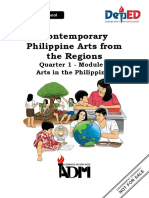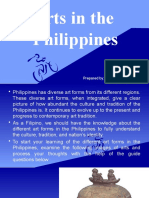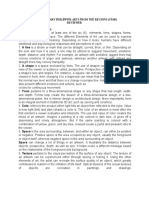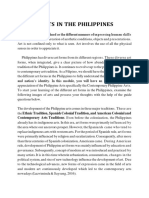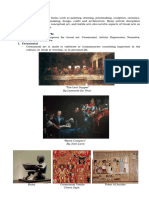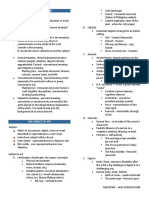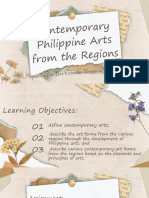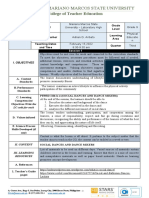0% found this document useful (0 votes)
64 views9 pagesAAP101 - Unit I Lesson 1 Part 2
This document provides an overview of art appreciation as a subject and discusses why it should be studied. It defines art appreciation as the ability to understand and appreciate works of art. It then lists 5 reasons for studying art appreciation: 1) to promote Filipino nationalism and pride, 2) to directly experience artworks, 3) to understand art history, 4) to become active participants in art, and 5) to foster respect for cultural differences. It also provides classifications and examples of different art forms and common subject matters in visual artworks.
Uploaded by
dreample1003Copyright
© © All Rights Reserved
We take content rights seriously. If you suspect this is your content, claim it here.
Available Formats
Download as PDF, TXT or read online on Scribd
0% found this document useful (0 votes)
64 views9 pagesAAP101 - Unit I Lesson 1 Part 2
This document provides an overview of art appreciation as a subject and discusses why it should be studied. It defines art appreciation as the ability to understand and appreciate works of art. It then lists 5 reasons for studying art appreciation: 1) to promote Filipino nationalism and pride, 2) to directly experience artworks, 3) to understand art history, 4) to become active participants in art, and 5) to foster respect for cultural differences. It also provides classifications and examples of different art forms and common subject matters in visual artworks.
Uploaded by
dreample1003Copyright
© © All Rights Reserved
We take content rights seriously. If you suspect this is your content, claim it here.
Available Formats
Download as PDF, TXT or read online on Scribd
/ 9













